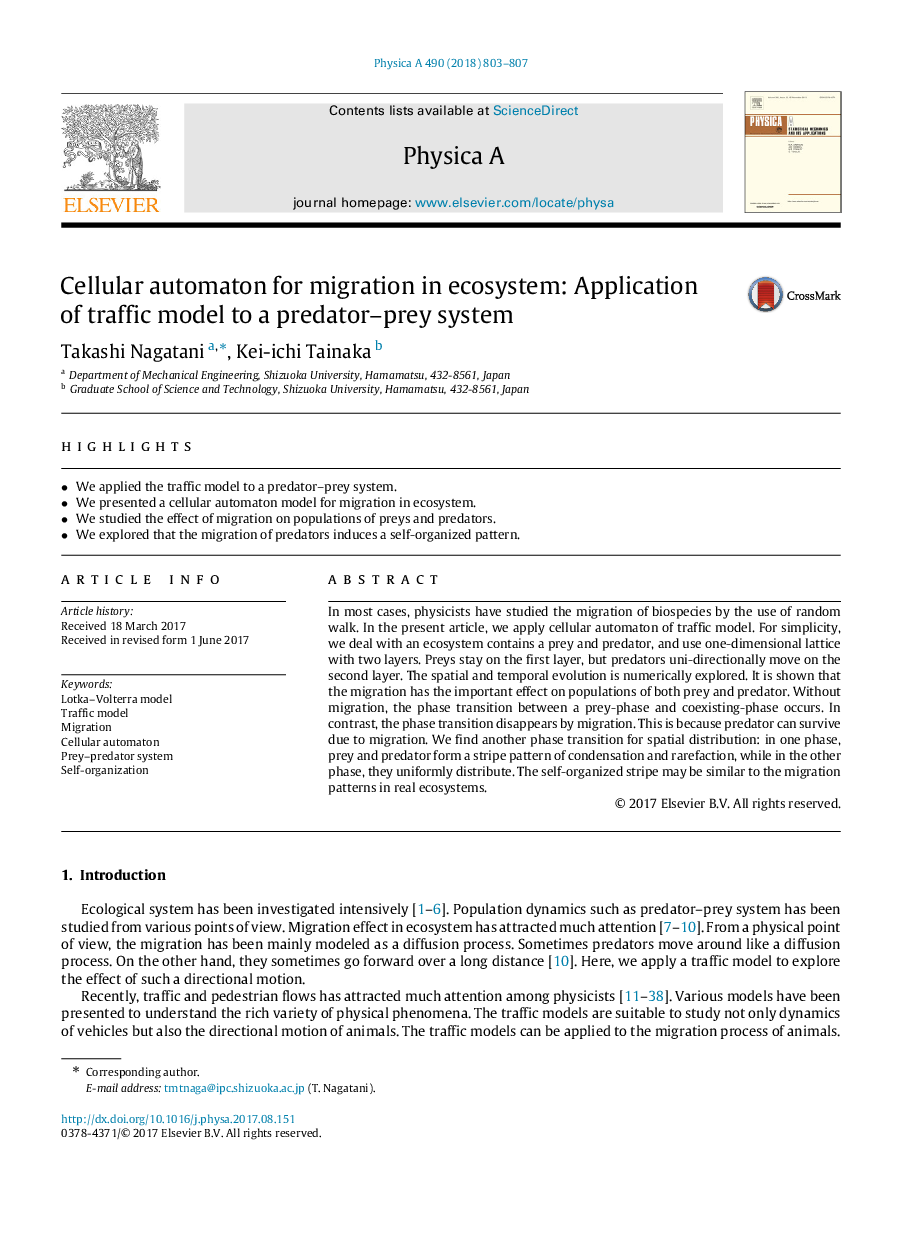| Article ID | Journal | Published Year | Pages | File Type |
|---|---|---|---|---|
| 5102449 | Physica A: Statistical Mechanics and its Applications | 2018 | 5 Pages |
Abstract
In most cases, physicists have studied the migration of biospecies by the use of random walk. In the present article, we apply cellular automaton of traffic model. For simplicity, we deal with an ecosystem contains a prey and predator, and use one-dimensional lattice with two layers. Preys stay on the first layer, but predators uni-directionally move on the second layer. The spatial and temporal evolution is numerically explored. It is shown that the migration has the important effect on populations of both prey and predator. Without migration, the phase transition between a prey-phase and coexisting-phase occurs. In contrast, the phase transition disappears by migration. This is because predator can survive due to migration. We find another phase transition for spatial distribution: in one phase, prey and predator form a stripe pattern of condensation and rarefaction, while in the other phase, they uniformly distribute. The self-organized stripe may be similar to the migration patterns in real ecosystems.
Keywords
Related Topics
Physical Sciences and Engineering
Mathematics
Mathematical Physics
Authors
Takashi Nagatani, Kei-ichi Tainaka,
